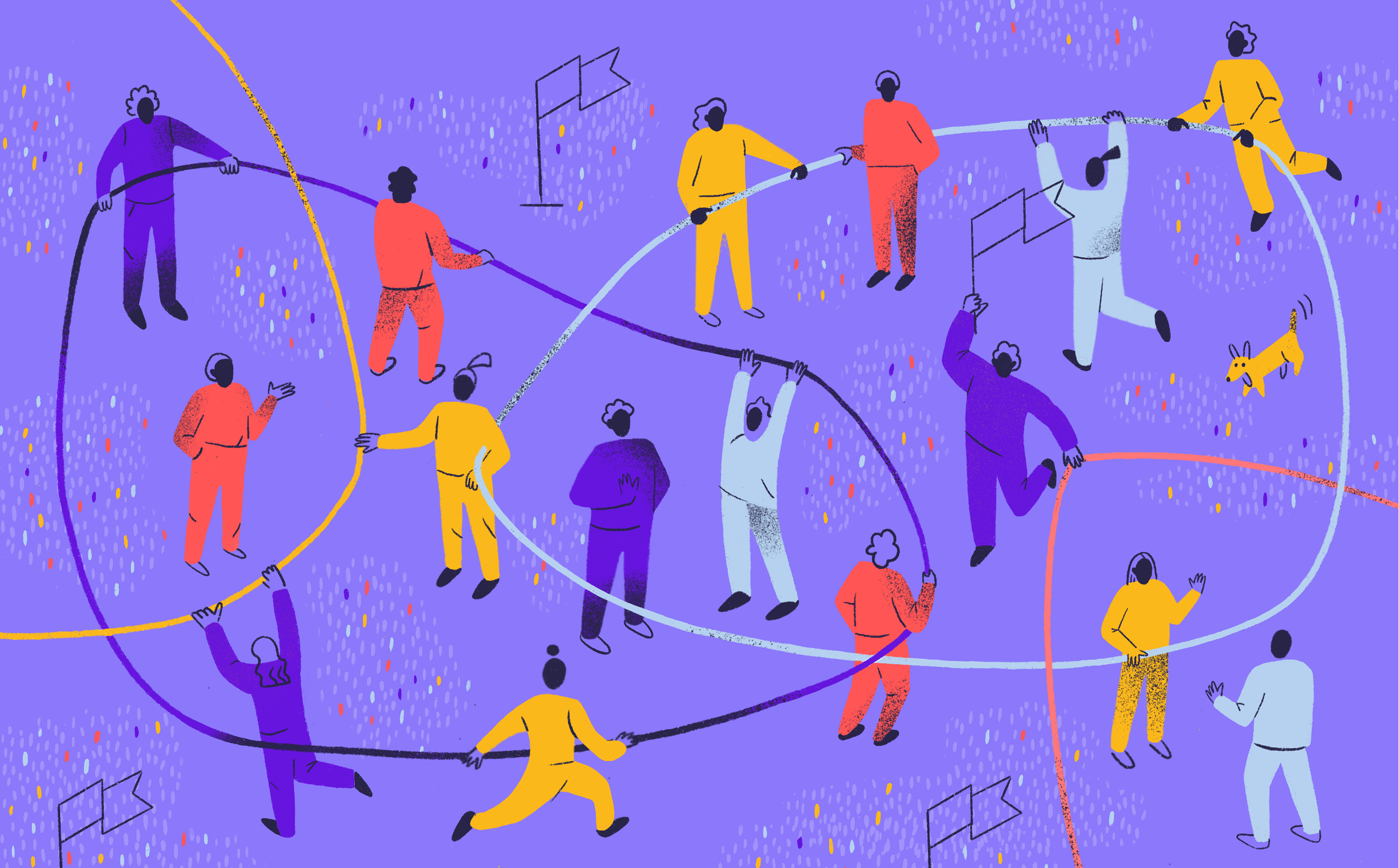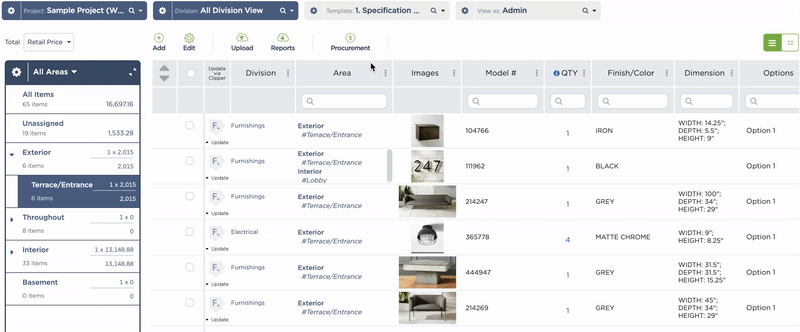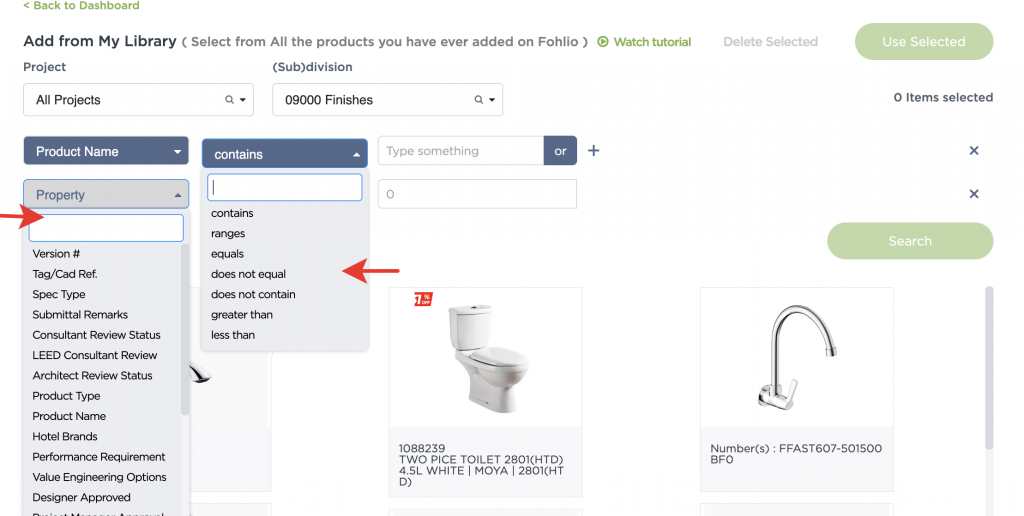
Specify, procure, and manage product data at scale. Take on bigger projects with confidence and grow your firm with Fohlio. Schedule a demo or book a consultation with one of our account managers to explore these features today.
Design and procurement teams each have their own distinct roles to play in the success of hospitality projects.
And while we typically think of them as two processes completely separate from the other (albeit with one flowing into the other), there’s a little-known but rich groundswell of benefits that come from better collaboration between the two.
In an age where hospitality projects are constantly in an aggressive fight to cut costs without sacrificing quality, this collaboration is crucial.
Here are 3 ways better collaboration between your design team and procurement team will turn into cost savings for your hospitality projects.
Reducing manual entries means cutting down on labor and errors.
“Manual entries?” you ask. “But that’s just how it’s always been done!”
Technically, you’re not wrong.

Procurement teams spend hours upon hours manually typing entries into requests for quotes and purchase orders, based on data the design team passes on (usually in the form of PDFs and spreadsheets).
Specifications, vendors, quantity — you name it, it’s been entered and re-entered more times than anyone can count. Your $5 million project’s FF&E procurement alone will have 200-300 POs manually processed.
It’s par for the course.
But what if it doesn’t have to be?
Imagine having both your design and procurement teams on one platform. After the designers are finished with spec writing, procurement agents are given access to the data, where they can fill in the missing information.

After that, they can go straight to creating RFQs, comparing bids, creating POs, and more.
The idea is to have both teams work using the same set of data, cutting down on re-entries and potential errors, and building on top of each other.
Which of course leads us to:
Building a firm-wide digital materials library gives you so much more insight and lets you do more.
Look, I know we keep saying this, but your firm’s digital materials library is a freaking workhorse. How? Let us count the ways.
1 – Re-ordering previously purchased products is so much easier.
You have products you trust and suppliers you have relationships with. Ordering the same materials shouldn’t be that hard, but in reality, it often is: Both designers and procurement agents can spend hours looking for the perfect product and making sure it’s definitely the one they want.
When you have your own library, searching through past projects can be done with a few clicks. Your designer finds the perfect product, and your procurement team knows exactly where to get it from, how much they got it for in the past, and what they can leverage to get a better deal.

2 – Historical data helps you estimate budgets faster and more accurately.
Maybe you’re trying to secure a loan or investment, or simply making sure the project doesn’t unexpectedly stall (thus wasting resources and delaying ROI). Having all your data in one place — meaning the exact products you need and how they cost — is crucial to building a complete picture, and therefore making informed decisions.
You don’t necessarily have to know what your costs are going to be down to the last penny, but the closer you are to the right numbers, the more confident you’ll be in your decisions.
3 – Mark discontinued products.
It sounds like such a simple thing, but knowing when products are discontinued during the specification process can make such a big difference.
Consider the typical scenario: Your designer specifies a certain carpet and passes it on to the procurement team, who then puts in an order. The supplier comes back and says they’ve stopped producing it two years ago, so procurement now has to ask the design team for an alternative.
As a bonus: They also tried specifying this last year from a previous project, and was told it was discontinued, but no one remembered because no one marked it in your library as discontinued.
When you have a huge project, time wasted on inefficiencies like this magnifies. If your designer had known during specification that the product has been discontinued, there wouldn’t be this back and forth between them, the procurement team, and the supplier.
4 – Specifying products for future projects is faster.
Remember the part where we mentioned building data on top of other data? In future hospitality projects, especially if it’s all within the same brand, specification is much faster. That’s because your designer will see how, in the past, specific products were used because they both maintain brand standards and come from suppliers that you already have relationships with.
This is even more helpful when you’re working with suppliers with whom you have pre-negotiated prices and volumes: Selecting products is much faster when designers are provided with this data during the specification process.
Read: Your Design Firm Needs a Digital Materials Library — Here Are 9 Reasons Why
Better collaboration leads to an increase in value created, both for your projects and your firm.
When you have a built-in mechanism for saving money, you don’t have to focus so much on saving by purchasing the most low-cost products. Instead, you can increase value for your hotel by sourcing the best-quality products.
If you’re freeing up costs that you used to incur because of longer processes and errors, you now have more flexibility in purchasing the best quality products you can afford. And we don’t have to tell how this can go a long way in ensuring guest satisfaction, and therefore your hospitality project’s ROI.
Read: 3 Ways to Reduce Student Housing Design Costs
And we’re not even talking about how higher-quality products last longer, taking longer to need replacement, and therefore saving you money in the long run.
Specify, procure, and manage product data at scale. Take on bigger projects with confidence and grow your firm with Fohlio. Schedule a demo or book a consultation with one of our account managers to explore these features today.
Expore Fohlio
Learn how to:
- Save days of work with faster specification
- Create firm-wide design standards
- Automate and centralize procurement
- Keep your whole team on the same Page
- Manage product data
- Track budget against cost in real time.
- Prepare for asset valuation
Published Jan 26, 2020

